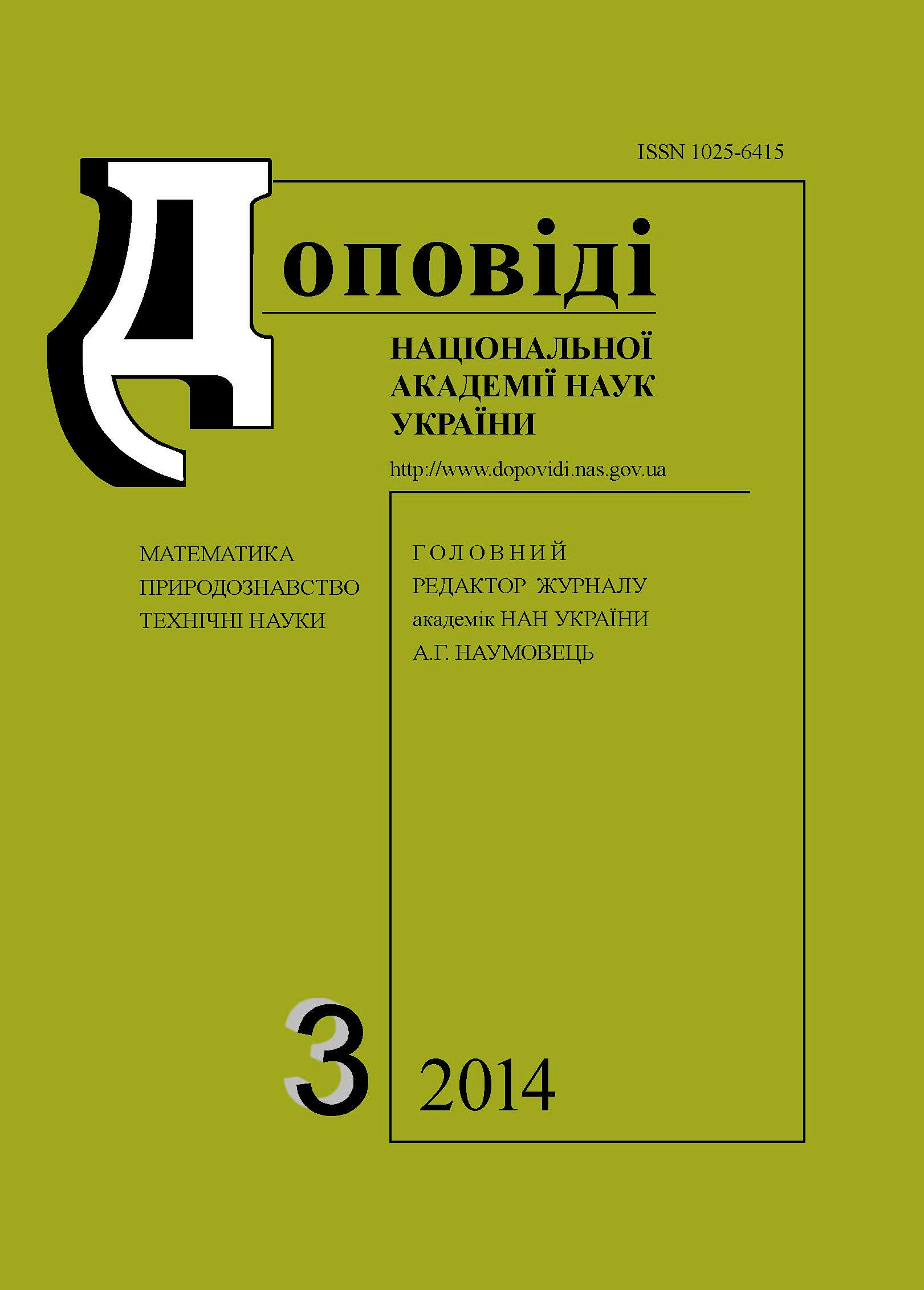One-step transformation with site-specific recombinase Cre/loxP system under the control of minimal 35S promoter for the development of marker-free transgenic Arabidopsis thaliana plants
DOI:
https://doi.org/10.15407/dopovidi2014.03.158Keywords:
S promoter, Arabidopsis thaliana, marker-free transgenic plants, transformationAbstract
In a number of works, the successful use of the site-specific recombinase system Cre/loxP under the control of chemical promoters to obtain marker-free transgenic plants was described. However, providing the transformation process with the conditional or another kind of treatment to initiate the recombinase expression is the disadvantage of this method. We have developed a new approach in the site-specific recombinase system Cre/loxP to produce marker-free genetically modified plants without any treatment and shown the efficiency of Cre recombinase in the progeny of transformed plants A. thaliana.
Downloads
References
Rosellini D. Crit. Rev. Pla., 2012, 31, No. 5: 401–453. https://doi.org/10.1080/07352689.2012.683373
Yemets A. I., Baird W. V., Blume Ya. B. Modified tubulin genes as selectable markers for plant transformation. In: Blume Ya. B., Baird W. V., Yemets A. I., Breviario D. (Ed.). The Plant Cytoskeleton: Key Tool for Agro-Biotechnology. NATO Sci. Peace and Security, Series C: Environmental Security, 2009: 435–454. https://doi.org/10.1007/978-1-4020-8843-8_21
Manimaran P., Ramkumar G., Sakthivel K. et al. Biotech. Adv., 2011, 29, No. 6: 703–714. https://doi.org/10.1016/j.biotechadv.2011.05.019
Rukavtsova E. B., Lebedeva A. A., Zakharchenko N. S., Buranov Ya. I. Fiziologiiz rastenii, 2013, 60, No. 1: 17–30 (in Russian).
Grindley N. D., Whiteson K. L., Rice P. A. Annu. Rev. Biochem., 2006, 75: 567–605. https://doi.org/10.1146/annurev.biochem.73.011303.073908
Wang Y., Yau Y.-Y., Perkins-Balding D., Thompson J. G. Plant. Cell. Rep., 2011, 30: 267–285. https://doi.org/10.1007/s00299-010-0938-1
Sauer B., Henderson N. New Biol., 1990, 2: 441–449.
Kopertekh L., Schulze K., Frolov A. et al. Plant. Mol. Biol., 2010, 72: 597–605. https://doi.org/10.1007/s11103-009-9595-6
Liu H. K., Yang C., Wei Z. W. Plant. Sci., 2005, 168: 997–1003. https://doi.org/10.1016/j.plantsci.2004.11.021
Sekan A., Isaenkov S. New approach in site-specific recombinase Cre/loxP technology for producing of marker-free transgenic plants. In: Proceedings of the 7th EPSO Conf. “Plants for a Greening Economy”. Porto Heli, Greece, 2013: 163.
Murashige T., Skoog F. Phys. Plant., 1962, 15, No. 3: 473–497. https://doi.org/10.1111/j.1399-3054.1962.tb08052.x
Jefferson R. A. Plant Mol. Biol. Rep., 1987, 5, No. 3: 87–405.
Murray M. G., Thompson W. F. Nucl. Acid. Res., 1980, 8, No. 19: 4321–4325. https://doi.org/10.1093/nar/8.19.4321
Dellaporta S. L., Wood J., Hicks J. B. Plant. Mol. Biol. Rep., 1983, 1, No. 4: 19–21. https://doi.org/10.1007/BF02712670
Srivastava V., Anderson O. D., Ow D.W. Proc. Nat. Acad. Sci. USA, 1999, 96: 11117–11121. https://doi.org/10.1073/pnas.96.20.11117
Downloads
Published
How to Cite
Issue
Section
License
Copyright (c) 2025 Reports of the National Academy of Sciences of Ukraine

This work is licensed under a Creative Commons Attribution-NonCommercial 4.0 International License.



